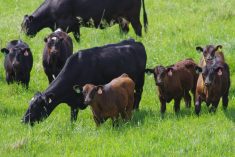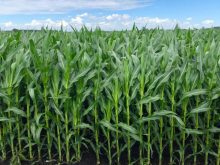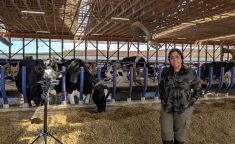Just what exactly does “sustainable beef” mean and who is deciding on the definition?
The who is the members of the Global Roundtable on Sustainable Beef. There are now several hundred but the key players are companies such as Walmart, JBS, and Cargill, the World Wildlife Fund, and producer groups, including the Canadian Cattlemen’s Association.
The roundtable, formed in 2010, has outlined five “core principles” which can be found here.
Read Also

Grazing ‘sweet spot’ boosts pasture performance
Timing-focused approach to pasture management touted to boost forage growth, livestock gains while also cutting farmer labour and inputs
How do principles translate to the ranch level?
Each principle will come with a set of criteria, and each one of those will have a set of indicators.
It’s the last bit — indicators — that will be used to set the protocols for sustainable beef production.
That’s still pretty murky. What’s an example of the rubber meeting the road?
Here are three, provided by Fawn Jackson, the CCA’s manager of environment and sustainability.
But all three are just theoretical examples as the indicators are still being developed.
The natural resource principle calls for responsible management of natural resources and enhancing ecosystem health, so caring for water resources is one of the criteria. That might mean, for example, protecting riparian areas on your land.
For animal welfare, one criteria would be identifying health problems and taking appropriate action to control and treat disease. In this case, prompt treatment might be an indicator — something already required under the Beef Code of Practice 2013.
The efficiency and innovation principle covers a wide range of things: innovation, optimizing production, reducing waste, and adding to economic viability. But under waste reduction, an example might be recycling pesticide containers or grain bags where recycling facilities are available.
OK, I’ve been doing those things for years. But I guess the question is how to prove it. Is this going to mean lots of paperwork?
That is indeed the big question. Those involved in the initiative say there may be some additional record-keeping, but are adamant a practical system will be created that will be easy to use and won’t take tons of time. It doesn’t exist yet, but the goal appears to be combining the Verified Beef Production (VBP) system with a database. One option would be a greatly enhanced Beef InfoXchange System, but it appears BIXS may be struggling to gain producer acceptance.
Auditing also appears to be part of the deal, and that would be a big change. Although about 80 per cent of Canadian producers are trained on the VBP system, the number who have voluntarily signed up for auditing is much lower.














